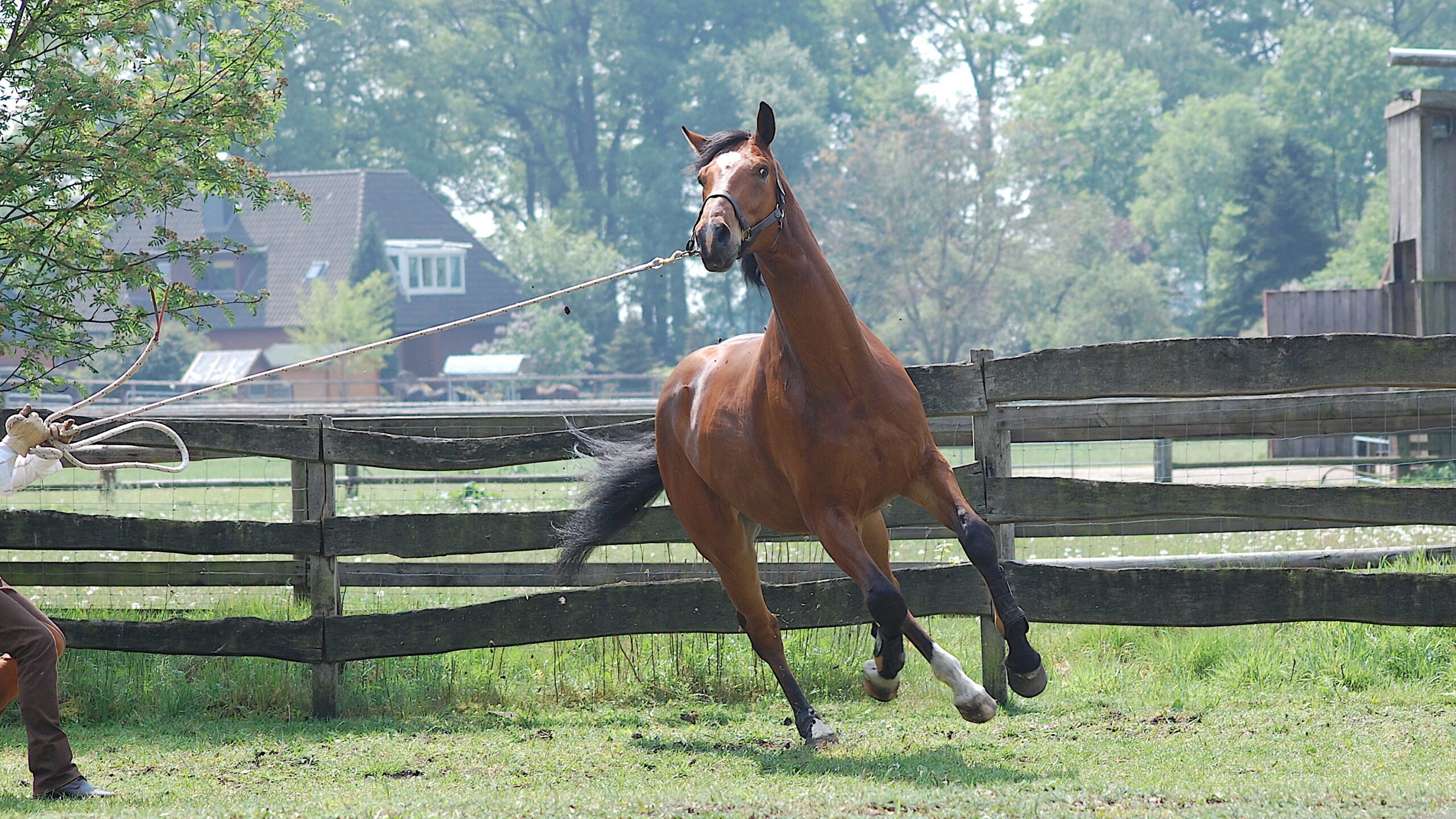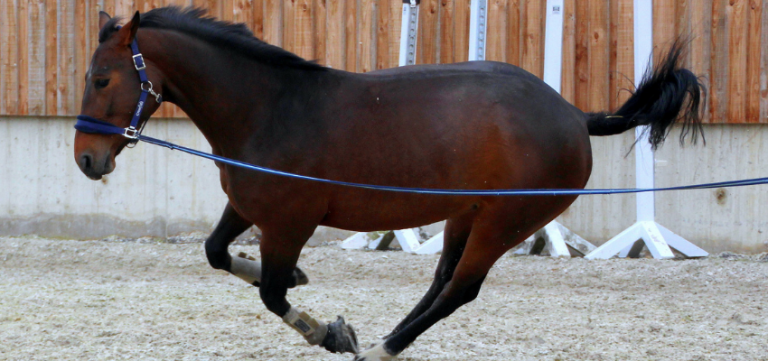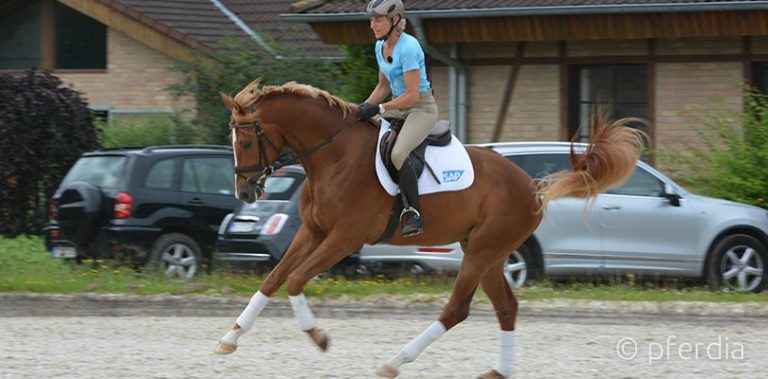Don't let a Bad Person Ruin a Good Thing: Reaping the Rewards of Working with a Difficult Horse
“That one’s no good…” We’ve all heard it before; heard of that one horse in the pasture that’s unrideable; untrainable; unlovable. We’ve seen his rage and observed his discontent; his loneliness. They’re difficult and frustrating; at times impossible and all but make us want to throw our hands up in the air and walk away. But if we give them a shot; if we refuse to give up on them; refuse to accept that they are a lost cause, they are the best mounts a rider can ask for. They are difficult horses.

What Exactly are Difficult Horses?
Difficult horses are characterized by oppositional, defiant behavior. They are the horses that choose not to comply with what a trainer is asking them to do, though they do understand. They are more often than not difficult to handle, insecure, and disobedient; defiant, or simple, non-compliant. They can be taxing and frustrating and overwhelming and can make for an incredibly painful experience, but in the end, it is ultimately our responsibility to help them overcome their personal obstacles; their fear and anxiety; their ambivalence and confusion; it is our responsibility to help the difficult horse break away from his own difficulties and shortcomings, because we were the ones to have caused them in the first place.
What Causes a Horse to Become “Difficult”?
There are two primary causes of difficult horses; two common factors that result in horses that exhibit oppositional behavior. One issue relates to poor practices, or a horse that has endured a sub-par training regiment. The second, more devastating cause of “difficult” behavior in horses exists as a direct result of traumatic experiences caused by former owners or trainers. These horses may have been hit, beaten, whipped, or otherwise coerced into submission through the use of fear or other threatening tactics, or they may have endured even more extreme abuse or neglect.
These are not animals that learned alongside their trainers and riders; rather, they were forced to comply with directives for fear of physical consequence. Naturally, other factors may precipitate what would be perceived as being a difficult horse. Studs are notoriously difficult by nature, though that is really a natural, hormonal manifestation. In addition, poor breeding operations that cross genetic markers resulting in indirect inbreeding can result in a horse that can be quite difficult, but overall, abuse and weak, splintered training are the two main culprits of an oppositional horse.
Cases involving challenges associated with difficult horses are not uncommon. Another thing that is not uncommon is the tendency for people to give up on them. Working with difficult horses requires a tremendous amount of patience; of fortitude, and in a society where fast and simple and quick seem to be the constant mantra, many people just “don’t have time” to work with the difficult horse. These animals can be absolutely heartbreaking to work with, as can watching owner after owner abandon them, but with a lot of love, patience, time, and reteaching, these horses can make incredibly strong-willed, determined mounts that offer you their loyalty for a lifetime.
Healing Hands
It can be incredibly difficult to reconnect with difficult horses; to earn their trust. Many of them struggle with overwhelming fears and anxieties, as a direct result of the trauma they’ve experienced throughout their lives. Difficult behaviors are a direct result of that lack of trust. When given a command, they fear the consequences of both complying with and refusing to comply with a given directive which causes even more anxiety and fear. Previous articles posted on our website indicate the incredibly sensitive innate fight or flight response that horses are born with.
Patience is a Virtue
Difficult horses have an even greater, more reactive fight or flight response that is a direct result of fear due to the trauma they have experienced in their past. Our jobs then, as trainers and riders and horsewomen and equestrians, is to provide them with even more love; with an even greater degree of patience, so that they are given the time that they really need to build a healthy, loving trusting relationship with us.
Ground Work is Where the Magic Will Happen
Although many riders dread exercises dealing with groundwork, if there was ever a magic pill, or anything remotely resembling a magic pill to take when dealing with difficult horses, this would be it. You are going to get the most bang for your buck, and see the greatest progress, and often experience the greatest achievements, on the ground. There’s just no way around it. That’s not to say that it won’t eventually translate to the saddle, but the ground is where it all must begin.
Where Should I Begin?
It is best to start with difficult horses much as you would start with a young horse. Always begin on the ground. Just because difficult horses have likely been ridden doesn’t mean that they should be, at least, not immediately. Start on the ground with difficult horses, and literally, work your way up. Meet them where they’re at, and make that your starting point, together. You may find that your horse has difficulty leading, or perhaps, he doesn’t load in the trailer safely. That is an excellent place to begin communicating with your horse, as it isn’t excessively complex, and being on the ground to begin is safer for both you and your horse.
Step #1
Begin assessing difficult horses much as you would the young horse, with desensitization being your first step. Discern to what degree he will allow you to touch him; to handle him. This may move relatively quickly, or it may become a lesson that takes a little more time, but regardless, it is a necessary, foundational step in the training process.
Step #2
Once the difficult horses you are working with have grown accustomed to your touch, begin sacking them out to gauge their readiness for the saddle. As mentioned before, one of the primary causes of a difficult horse would be a fractured skill set, or gaps in his training regimen. If you approach the process patiently, and methodically, you are sure to identify and ultimately, be able to correct any fractured skill set that you encounter. These learning gaps may be a result of him having changed hands so often, or could even be the result of injury, but the important thing is less on the why and more on identifying and correcting comprehension so that you can continue moving forward in your work together.
Step #3
If the difficult horses show no sign of stress as you are tacking up, if they take their saddles readily, you should be ready to move on to the lunge line. This provides several important advantages. First, and always most important, lunging exercises provide the greatest degree of safety, as they are work from the ground, so not only you, but also your horse, are far safer when engaging in these types of lessons. Additionally, working him on the line provides a vantage point that allows you to assess the bigger picture. You are able to see his natural gaits and the way in which he is balancing, driving, and moving his body, so they provide a ton of information as far as natural movement goes.
Lunging also provides you the opportunity to assess his mindset on any given day. If he is going to react, or become oppositional, that defiance will be something he exhibits while you are on the ground, so there are greater opportunities for you to communicate and correct those behaviors, again, while maintaining the safety of you and your horse.
No Horse Left Behind
Few teachers find themselves, when working closely with a challenging learner, ever throwing their hands up in the air, and simply giving up. They incite innovation, they practice patience and humility, they see the big picture, and they see the learner as an individual. They see all the promise and potential that lies therein, but to see it, they choose to look; and hard. Past all of the fabricated stories, past all of the outbursts and frustrations, and that is what you have to do when working with difficult horses. All of those components truly come into play when working with difficult horses.
Understanding the Dichotomy
Difficult horses are almost always misunderstood. Like children who develop reactive behaviors, due to traumatic experiences, difficult horses will often exhibit oppositional behaviors; reacting defiantly. For many, it is easier to give up, to conclude that the efforts are hopeless and that success exists only as impossibility. However, the opposite could not be more true, as it is these individuals that need love the most, and these individuals, when finally given a chance, that often have the most to give.
Articles about Difficult Horses

Problem horses – There is always a reason
Table of Contents: When are horses considered problem horses? Why are there problem horses? The importance of timely recognition of issues Problems due to human

Help! My Horse Keeps Bucking
A horse bucking because he feels good is one thing but bucking under saddle is another, ranging from fairly harmless little bunny hops to terrifying bronc shows.

Getting a Handle on Rearing and Bucking: A Time and a Place for Everything
What actually causes horse rearing and bucking? What triggers or causes these behaviors to occur, and are they as exciting as they are depicted to be?
